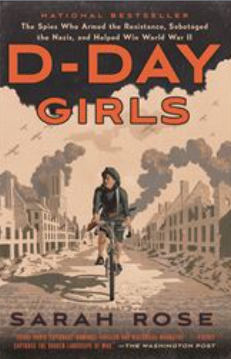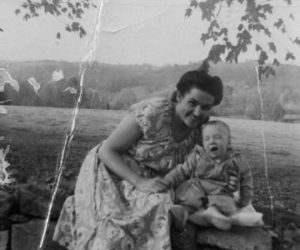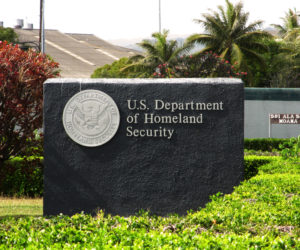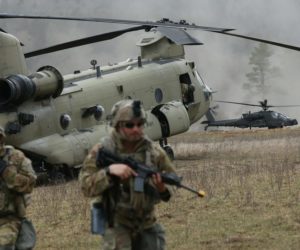
Today is the 81st anniversary of the D-Day landings on the beaches of Normandy — a Day of honor, gallantry and heroism that eventually led to the defeat of the Nazi aggressors.
But also, a Day that saw 4,414 Allied troops make the ultimate sacrifice.
Research shows that no women are included in that grim toll on that Day. However, two British nurses on a hospital ship during the ensuing 12-week Battle of Normandy died when their ship struck a mine off the Normandy coast.
Additionally, hundreds of Allied military women gave their lives in service to the Alliance in the months and years before D-Day and in the remaining months of the War.
Hundreds of thousands more women contributed to the success of D-Day in non-combat roles — in factories, in administration, in Intelligence, in hospitals, as auxiliary pilots, nurses, truck drivers, mechanics, etc.
In a D-Day editorial at the Daily Press describing the success of the D-Day invasion, members of the Editorial Board write:
The success of the massive air- and seaborne D-Day invasion, commemorated across Normandy this week , was the culmination of a monumental Allied war effort that, from the outset, needed the muscles, intelligence, bravery, fortitude, patience, discretion and self-sacrifice of women, who juggled wartime service with child-care, too, while men fought to free foreign lands.
There is, however, a small group of women who played a critical, heroic role in direct and vital preparations for the Normandy landings.
Around the 75th anniversary of D-Day, journalist and bestselling author Sarah Rose published a meticulously researched and documented book that “follows a handful of these heroines through thick and thin; trough success and failure; through romances, double agents and double-crossings; through capture, imprisonment, interrogation, torture, unspeakable atrocities, sickness and even death for some.”
At the time, Rose wrote:
Thirty-nine women of SOE [Special Operations Executive] went to war, and fourteen of them never came home. These women broke barriers, smashed taboos, and altered the course of history…They were sent undercover, so they never expected glory, and their story was classified for almost seventy years after the war. With the seventy-fifth anniversary of D-Day approaching this June, it is an honor to tell their story now.
On the 80th anniversary of D-Day, I wrote about this fascinating book, D-Day Girls.
I, too, find it an honor to revisit her book – those heroines – on this 81st anniversary:
More than three years before the Allies launched the single largest, most epic amphibious invasion in the history of mankind — the Normandy Invasion — the mission was already a twinkle in British eyes.
In March 1942, on the BBC evening news, an urgent call went out to the British people on behalf of the Royal Navy. It was asking Britons to send to the government any photos they had taken on the French coast, no matter how boring, trivial or mundane.
You see, unknown to the public, the Inter Services Topographical Department (ISTD) was assembling a detailed picture of the entire French coast and the Low Countries.
Why? Because “to plan an invasion, the navy had to render a depiction of the country from wave height, from the prow of an incoming landing craft…The navy had to know what the harbor and beaches looked like, the gradient of each sloping dune…”
The British people responded immediately, sending the government “some thirty thousand envelopes, including ten million vacation snaps.”
The ISTD was able to build “a photo mosaic, a montage of family memories, and stitched the panorama together for a colossal topographical quilt [that became] the platform for a battle plan of the Allied invasion of Europe.”
But even before this, while America was still on the sidelines, Winston Churchill foresaw the day when England, hopefully with the help of existing and future allies, would launch an attack on the Nazis on the Continent.
For the invasion and follow-on campaign to be successful, it was essential to gather crucial intelligence, deceive, soften the occupying force, cripple its infrastructure through espionage, deception, sabotage, targeted raids. In other words, through clandestine warfare, covert operations.
To this end, Churchill created a new, secret agency “for insurgency,” a professional fifth column. It was called the Special Operations Executive (SOE), or “the Firm,” whose agents were trained in everything from sabotage and demolition to sharpshooting. It would wage “…the dirtiest war, beyond the rules of engagement—warfare by every available means, including murder, kidnappings, demolitions, ransoms, and torture.”
SOE would need men, lots of them, on the ground in Europe, especially in France.
There was only one problem: With so many men already involved in the war effort, Britain was running out of men.
A young British Captain, Selwyn Jepson, was able to convince Winston Churchill of the appropriateness, ethics and legality of the then-unprecedented use of women for such dangerous war roles, especially considering the fact that women would be exposed to the worst of Nazi cruelties and depravations, should they be captured.
And so, more than three dozen brave and daring women were recruited, trained and parachuted into France during full moons or surreptitiously landed by sea onto French shores in pitch black darkness.
Their “job”: To gather intelligence, establish and operate drop zones for weapons, explosives and agents (“parachutages“); destroy railways and railway tunnels; blow up power lines; ambush Nazis, plot prison breaks; run safe houses, extract downed Allied fliers, rotate agents to and from England. All towards one purpose; to pave the way for the D-Day invasion and the ensuing Allied advance into occupied Europe.
A job so dangerous that one of the items in their “survival kits” was the “L-Pill,” “…the very last pill anyone would ever take…coated in rubber, sewn into the lining of a sleeve…filled with cyanide. If swallowed, it was harmless. If bitten, it was fatal.”
A job so dangerous that, of the thirty-nine women who answered the call, half were caught and imprisoned and a third did not return home alive.
















